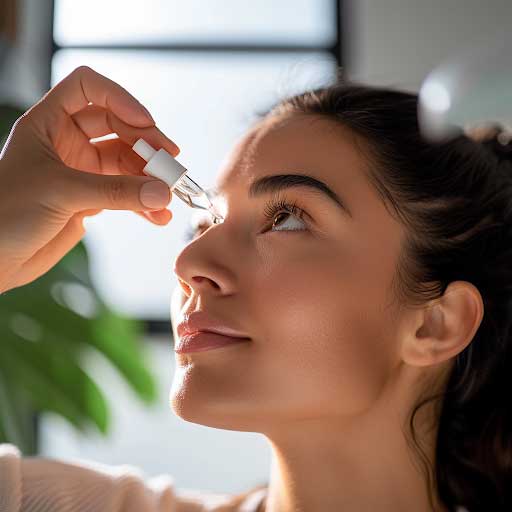Undergoing LASIK surgery is a transformative experience for many, offering freedom from glasses and improved vision. However, the journey to optimal vision health doesn’t end in the surgery room; it extends into the crucial weeks and months of post-LASIK care.
Proper aftercare is essential for maintaining your eyes’ health and ensuring your LASIK results’ longevity. Here, we explore the essential steps and practices to follow after LASIK surgery, ensuring your vision remains as sharp and clear as the day you said goodbye to your glasses.
The First 48 Hours: Immediate Post-LASIK Care
The initial period following your LASIK surgery is foundational to a successful recovery and optimal long-term results. During these first 48 hours, your eyes begin to heal and adjust to their new state. Immediately after the procedure, you’ll be equipped with protective eyewear.
This serves to shield your eyes from potentially harmful light and prevent any unconscious rubbing or touching that might disrupt the healing of your corneas. Equally important is the application of prescribed eye drops. These drops are designed to lubricate your eyes, reducing infection risk and alleviating discomfort.
What to Expect: Symptoms and Management
After undergoing LASIK surgery, patients commonly report a range of symptoms as their eyes adjust to the changes. While potentially unsettling, these sensations are typically short-lived and manageable with proper care.
- Mild Discomfort: A sense of irritation or mild pain is not uncommon, but it should be manageable with over-the-counter pain relievers or medication provided by your surgeon.
- Light Sensitivity: You may find bright lights or even daylight to be uncomfortably intense initially. Sunglasses and dimming indoor lights can help mitigate this sensitivity.
- Gritty Feeling: A sensation that something is in your eye is a normal part of the healing process. Avoid rubbing your eyes to prevent damage, and use lubricating eye drops to soothe this sensation.
- Blurry Vision: It’s normal for your vision to fluctuate and appear blurry as your eyes recover. This should stabilize relatively quickly, but consult your eye care professional if it persists.
Following your surgeon’s post-operative instructions closely during this time is crucial. These guidelines are tailored to your situation and designed to minimize discomfort while maximizing the healing process.
By understanding and preparing for the range of sensations you may experience and knowing how to address them, you can confidently navigate the post-LASIK period. Remember, the journey to optimal vision health is a partnership between you and your eye care professionals. Your commitment to following through with prescribed care is pivotal in achieving the clear vision you desire.
The Critical Weeks: Short-Term Post-LASIK CareEnhancing Your Vision Quality Post-LASIK
The weeks immediately following your LASIK surgery are a period of significant healing and adjustment for your eyes. During this time, it’s paramount to closely monitor your vision’s progress and protect your eyes from any potential harm.
Follow-Up Visits and Eye Health Monitoring
The importance of follow-up appointments after LASIK surgery cannot be overstated. These sessions with your eye care professional are vital for assessing the healing progress of your eyes and ensuring that your vision is developing as expected. During these visits, your doctor will examine your eyes for any signs of complications and verify that the corneal healing is on track.
It’s also an opportunity to discuss any symptoms or discomfort you may be experiencing. Adhering to these appointments is crucial, even if you believe your vision has improved significantly or feels perfect. They are a fundamental part of your post-operative care and critical for catching and addressing potential issues early on.
Activity Restrictions and Eye Safety
In the initial weeks after your LASIK procedure, safeguarding your eyes from injury and avoiding environments that could jeopardize your recovery are vital priorities.
- Avoid Contact Sports: Activities that pose a risk of physical contact or eye injury should be avoided. Even minor trauma can disrupt the healing process.
- Stay Clear of Dusty or Dirty Environments: Dust, dirt, and other airborne particles can irritate your healing eyes and increase the risk of infection.
- Refrain From Swimming and Using Hot Tubs: Bodies of water can harbor bacteria and other pathogens that pose a risk of infection to vulnerable eyes.
- Wear Protective Eyewear: When outside or in potentially hazardous environments, protective sunglasses can shield your eyes from UV rays and debris.
- Limit Exposure to Screens: Reducing screen time can help prevent eye strain and dryness, which are common in the postoperative period.
Following these restrictions and safety measures is essential for protecting your eyes and ensuring a smooth recovery. This period is critical for allowing your eyes to heal properly and adapt to their new condition without the risk of complications.
Long-Term Vision Health Maintenance
After the initial recovery from LASIK surgery, the focus shifts to maintaining the health of your eyes for the long term. This phase is about integrating practices into your lifestyle to sustain and support your vision health.
It’s a commitment to proactive care designed to preserve the clarity and comfort of your vision. Understanding how to care for your eyes day-to-day and recognizing symptoms that may indicate a need for professional attention are critical components of this ongoing commitment.
Recognizing and Addressing Late-Onset Symptoms
Even years after LASIK, it’s essential to remain vigilant to changes in your vision or eye health. Early recognition and intervention can prevent minor issues from becoming serious complications.
- Increased Light Sensitivity: If you find yourself squinting or experiencing discomfort in bright light conditions, it may indicate changes in your eye health.
- Vision Changes: Any noticeable decline in your vision clarity, such as blurriness or difficulty focusing, warrants a professional evaluation.
- Persistent Dry Eyes: While some dryness is expected after LASIK, ongoing discomfort or the need for frequent eye drops should be discussed with an eye care provider.
- Night Vision Difficulties: Experiencing halos or glare at night can be a sign of changing vision and may require corrective measures.
Addressing these symptoms promptly with your eye care professional is crucial. They can assess whether these are normal post-LASIK adjustments or signs of late-onset complications. With Dr. Manger‘s skill and the 99.7% success rate, the need for corrective surgery is significantly minimized, ensuring the maintenance of your vision health and the quality of your LASIK results. Early detection and treatment are key.
Enhancing Your Vision Quality Post-LASIK
Maintaining your vision after LASIK goes beyond the immediate post-operative care; it extends into how you nourish your body and live your life. A diet rich in omega-3 fatty acids, found in fish like salmon and flaxseeds, can help manage dry eyes, a common condition after LASIK.
Vitamins C and E and zinc play pivotal roles in protecting your eyes from age-related eye conditions. These nutrients support the retina’s health and may slow the progression of degenerative diseases. Beyond diet, regular physical activity can improve blood circulation, which is beneficial for eye health.
Exercise helps to reduce the risk of conditions like high blood pressure and diabetes, which can affect your vision. Lastly, managing screen time is also crucial; excessive screen exposure can lead to digital eye strain, affecting your comfort and vision quality. By incorporating these nutritional and lifestyle habits, you’re investing not just in your vision but also in your overall well-being.
Advanced Eye Care and Screen Time Management
Post-LASIK, adopting advanced eye care practices to mitigate these effects becomes even more important. One effective method is the 20-20-20 rule, a simple yet powerful way to reduce eye strain. Every 20 minutes, take a break to look at something 20 feet away for at least 20 seconds.
This practice helps to relax the eye muscles and reduce fatigue. Additionally, using blue light filters on digital devices can minimize the amount of blue light exposure, which affects sleep patterns and potentially harms retinal cells.
When to Consult Your Eye Care Professional
While LASIK is renowned for its high success rates and quick recovery times, it’s crucial to remain attentive to your eye health and recognize when to seek expert advice. Understanding the signals your eyes might be giving you can be the key to promptly addressing potential issues.
Signs That Warrant a Professional Consultation
Post-LASIK, certain symptoms should prompt an immediate consultation with your eye care professional. These signs should not be ignored, as they can indicate complications that may need quick intervention or adjustments in your care routine.
- Sudden Vision Changes: Any abrupt alteration in your vision, such as blurriness, double vision, or significant vision loss, should be addressed immediately.
- Eye Pain: While some discomfort can be normal post-surgery, persistent or severe pain is not and warrants a professional evaluation.
- Significant Dry Eyes: Dryness is expected after LASIK, but if it becomes severe or fails to improve with over-the-counter drops, it may require treatment.
- Increased Light Sensitivity: If you find yourself unusually sensitive to light, to the point where it becomes a hindrance, it’s important to get checked.
- Flashes of Light or Floaters: Seeing sudden flashes of light or increased floaters (small dark shapes that float across your vision) can be a sign of retinal issues.
Experiencing these symptoms can be concerning, but prompt action and consultation with your eye care professional often mitigate potential problems, ensuring your post-LASIK journey continues smoothly. Maintaining open communication with your eye care team and scheduling regular check-ups is essential, even if you feel your vision is perfect.
Ensuring your vision stays as clear and healthy as the day after your LASIK procedure requires diligent care and the right partner in your eye health journey. At Saddleback Eye Center, Dr. Manger’s unparalleled expertise and success rate provide the foundation for this journey. By choosing us, you’re not just selecting a provider; you’re partnering with a team dedicated to ensuring your vision remains clear and healthy for life. Contact us to learn more!





